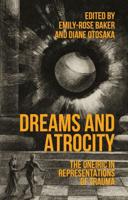Publisher's Synopsis
The stark reality of all life, from the biology of the food chain incorporating all living beings to the social stratification and hierarchies of human cultures, revolves around violence -- physical or psychological. That unavoidable, black-and-white, worldview of survival of the fittest with little if any grey to mitigate it is coloured only by the red lifeblood of the victims of the bigger, the stronger, the smarter, the wilier, who literally and/or figuratively 'eat' their victims -- overcoming, overwhelming, controlling, oppressing them. The premise behind the book focuses on the representation of the visual and literary artistic products of a group of seemingly alike yet divergent societies, with linguistic and cultural ties that reflect those societies' means of control. These representations socialise viewers and/or readers in personal or public situations, establishing ubiquitous hierarchies. French social anthropologist/literary critic/theorist René Girard maintains in Violence and the Sacred that 'the oldest means of social control is . . . violence.' While the incorporated violence itself is not the overweening theme of this work, the representation or threat of violence functions in reality in terms that imply its consequences to the viewer or reader. These consequences are discussed in terms of control-directed violence based on gender roles and politics, socio-cultural power, and environmental issues or eco-violence. The underlying message is that of the necessity to behave according to imposed norms, stated or implied, or suffer those consequences -- convincing leitmotif in works by Spanish, Hispanic American and Latino visual artists and writers in the Spanish language over the ages.










